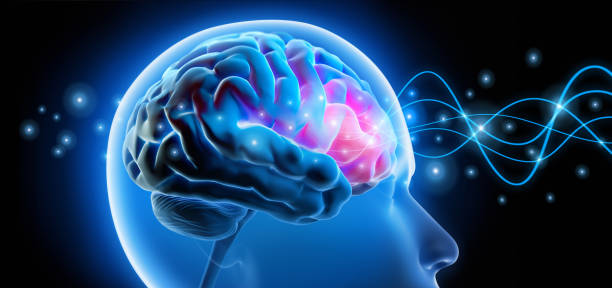Natural Language Generation (NLG) is a subfield of artificial intelligence and computational linguistics that focuses on enabling computers to produce human-like language from structured or unstructured data. It is a crucial branch of Natural Language Processing (NLP), which deals with understanding and generating human language in a computational context. NLG systems aim to transform data, numbers, and symbolic representations into coherent, contextually relevant, and grammatically correct natural language text. This technology underpins many modern applications, including chatbots, virtual assistants, automated journalism, data-driven reporting, and report generation systems.
The ability of machines to generate text that appears as if written by humans marks a profound leap in human–computer interaction. Whereas early computer systems could only output rigid, formulaic statements, contemporary NLG systems are capable of composing essays, summaries, news articles, and even creative writing. The sophistication of NLG has increased dramatically over the past few decades, driven by advances in machine learning, deep learning, and large-scale language modeling. Today, systems powered by NLG can produce contextually adaptive responses, generate multilingual content, and engage in conversational dialogue indistinguishable from human writing in many cases.
The Concept and Scope of Natural Language Generation
Natural Language Generation can be defined as the computational process of converting data or machine-readable information into human-readable text. It is the inverse of Natural Language Understanding (NLU), which involves interpreting text to extract meaning. Together, NLG and NLU form the backbone of NLP, bridging the gap between structured data and human communication.
The scope of NLG is broad and interdisciplinary, encompassing computer science, linguistics, cognitive psychology, and artificial intelligence. Its goal is to enable machines to communicate effectively, clearly, and naturally with humans. NLG applications can range from simple template-based sentence construction to advanced systems capable of creative and adaptive storytelling. In each case, the key challenge lies in generating text that not only conveys the intended meaning accurately but also matches the tone, style, and context expected by the reader.
At its core, NLG involves both content selection and linguistic realization. The system must decide what information to include and how to express it in natural language. This process requires understanding both the semantics (meaning) and pragmatics (context and intent) of communication. As such, NLG is not merely about stringing words together—it is about producing meaningful and contextually appropriate discourse that satisfies communicative goals.
The Historical Development of NLG
The history of Natural Language Generation can be traced back to the early developments in artificial intelligence and computational linguistics during the mid-20th century. The earliest NLG systems appeared in the 1960s and 1970s when computer scientists began experimenting with rule-based methods to automate language production. These early systems were rigid and lacked flexibility, relying on handcrafted templates and grammar rules to produce text. Although limited, they demonstrated the possibility of algorithmically generating human-readable sentences.
One of the earliest examples of an NLG system was the ELIZA program, developed by Joseph Weizenbaum in 1966. While ELIZA was primarily a natural language understanding system designed to simulate a psychotherapist, it relied on simple text generation templates to respond to user inputs. Around the same period, researchers developed early data-to-text systems that could generate weather reports or stock summaries based on predefined sentence templates.
The 1980s and 1990s marked a shift toward more sophisticated linguistic and computational models. Researchers began exploring grammar-based systems, which incorporated syntactic and semantic structures to improve fluency and coherence. Systems like FUF/SURGE and KPML allowed researchers to generate more complex and contextually appropriate text by manipulating underlying linguistic representations. However, these systems required extensive manual rule crafting, making them labor-intensive and difficult to scale.
The advent of machine learning in the early 2000s revolutionized NLG. Instead of manually encoding linguistic rules, systems began learning from large corpora of text data. Statistical models, such as n-grams and probabilistic language models, provided a data-driven way to predict and generate natural language sequences. The next major leap came with the rise of deep learning and neural networks. Neural language models, particularly those based on recurrent neural networks (RNNs) and later transformers, transformed NLG into a more robust, flexible, and powerful field.
By the 2020s, NLG systems powered by large-scale transformer architectures such as GPT (Generative Pretrained Transformer), BERT (Bidirectional Encoder Representations from Transformers), and T5 (Text-to-Text Transfer Transformer) achieved human-like proficiency in text generation tasks. These models could write essays, summarize long documents, translate languages, and even engage in multi-turn conversations. The transition from rule-based to data-driven approaches marked a paradigm shift, moving NLG from a niche research area to a core component of AI applications worldwide.
The Architecture of Natural Language Generation Systems
An NLG system typically involves several stages that work together to produce coherent text from input data. While the exact architecture can vary depending on the approach—rule-based, statistical, or neural—the fundamental process generally includes content determination, text structuring, lexicalization, aggregation, referring expression generation, and surface realization.
Content determination involves deciding which information should be included in the output. Given a dataset or input representation, the system selects the most relevant pieces of information that align with communicative intent. For instance, an NLG system generating a weather forecast might choose to include temperature, wind speed, and precipitation data but exclude irrelevant details.
Text structuring determines the order in which information should be presented. This stage deals with discourse organization—how sentences and paragraphs are arranged to form a coherent narrative. The order of presentation affects readability and comprehension, much like how human writers decide how to structure their ideas.
Lexicalization is the process of selecting the actual words or phrases used to express the chosen content. This step translates abstract concepts into concrete linguistic expressions. For example, a temperature increase might be expressed as “getting warmer” or “rising temperature,” depending on context and tone.
Aggregation involves combining multiple pieces of information into concise, coherent sentences. Instead of generating one sentence per data point, NLG systems can merge related facts into a single, fluid statement. This enhances readability and prevents redundancy.
Referring expression generation deals with the challenge of referring to entities consistently and unambiguously throughout the text. A person might be introduced as “Dr. Smith” and later referred to as “she” or “the researcher.” Proper management of references maintains clarity and coherence.
Surface realization is the final stage, where grammatical rules and syntactic structures are applied to produce the final text. This involves selecting appropriate verb tenses, articles, and punctuation to ensure the text reads naturally. Modern neural models perform this process implicitly through deep learning, whereas earlier systems relied on explicit grammar rules.
Each of these stages reflects cognitive processes that humans use when generating language, making NLG an attempt to model aspects of human communication computationally.
Rule-Based vs. Data-Driven Approaches
Natural Language Generation systems can broadly be classified into rule-based and data-driven approaches. Rule-based systems were the earliest form of NLG and operate by encoding linguistic and domain-specific knowledge into explicit rules. They are deterministic, meaning that for a given input, the output will always be the same. These systems are interpretable and can produce highly accurate text in restricted domains, such as weather reports or financial summaries. However, they lack scalability and flexibility. Crafting and maintaining a large set of linguistic rules is labor-intensive, and such systems often struggle when applied to new domains or ambiguous data.
Data-driven approaches, on the other hand, rely on statistical and machine learning techniques to learn from examples. Instead of manually defining rules, these systems analyze large corpora of human-generated text to infer patterns and linguistic structures. Statistical models such as hidden Markov models (HMMs) and maximum entropy models were early examples of this shift. These approaches improved flexibility but were still limited by the amount and quality of data available.
With the advent of deep learning, especially neural networks, data-driven NLG underwent a revolution. Neural networks, particularly Recurrent Neural Networks (RNNs), Long Short-Term Memory (LSTM) models, and later transformer architectures, enabled systems to model complex dependencies in text. These systems could learn not only grammar and syntax but also context, tone, and style. Neural NLG systems are probabilistic—they can generate diverse outputs for the same input depending on sampling parameters, making them more human-like in creativity and variability.
The current trend in NLG favors large pre-trained transformer-based models that can be fine-tuned for specific tasks. These models, such as GPT, T5, and BLOOM, have demonstrated unprecedented fluency and adaptability. They can generate long-form content, summarize information, translate languages, and even simulate dialogue, all without explicit rule encoding. This transition marks a move toward general-purpose text generation systems capable of adapting to a wide range of applications.
Neural Network-Based Language Generation
Neural networks have fundamentally changed how NLG systems are designed. Recurrent Neural Networks (RNNs) were the first models capable of generating sequences of text by maintaining contextual information across time steps. However, RNNs suffered from issues such as vanishing gradients and difficulty handling long-term dependencies. The introduction of LSTM and GRU (Gated Recurrent Unit) architectures mitigated these issues, enabling models to handle longer sequences with greater stability.
The next transformative step came with the introduction of the transformer architecture in 2017, proposed by Vaswani and colleagues in the paper “Attention Is All You Need.” Transformers replaced recurrent connections with attention mechanisms, allowing models to consider all positions in a sequence simultaneously. This innovation drastically improved parallelization and performance on large-scale datasets. Transformer-based models can capture long-range dependencies and complex contextual relationships far more effectively than their predecessors.
Pre-trained transformer models such as GPT (Generative Pretrained Transformer), BERT, and T5 marked the beginning of a new era in NLG. GPT, in particular, was designed as a generative model that could predict the next word in a sequence given its context. By training on vast amounts of text from the internet, GPT learned statistical patterns of language, grammar, and semantics at an unprecedented scale. Later versions—GPT-2, GPT-3, GPT-4, and beyond—demonstrated the ability to generate coherent essays, dialogue, code, and creative writing.
Unlike earlier models that required separate training for each task, these large language models (LLMs) are general-purpose. They can perform multiple NLG tasks with minimal fine-tuning, a phenomenon known as “transfer learning.” Given a prompt or instruction, the model can adapt its output dynamically, making it suitable for applications ranging from content generation to question answering.
Applications of Natural Language Generation
The applications of NLG span numerous domains, transforming industries and reshaping communication. In business and finance, NLG is used to generate reports, summaries, and insights automatically. For example, financial institutions employ NLG systems to produce earnings reports, while data analytics platforms generate narrative explanations of data trends.
In journalism, automated news generation systems can write articles about sports, elections, or market results by analyzing structured data feeds. The Associated Press, for example, uses NLG tools to produce thousands of articles annually, freeing journalists to focus on investigative work. Similarly, in weather forecasting, NLG systems can convert meteorological data into human-readable forecasts.
Customer service and conversational AI are major beneficiaries of NLG. Chatbots and virtual assistants like Siri, Alexa, and Google Assistant rely on NLG to respond naturally to user queries. These systems use contextual understanding to craft relevant responses, making human–machine interaction smoother and more intuitive.
In healthcare, NLG assists in generating clinical summaries, patient reports, and medical documentation. This automation saves time for healthcare professionals and ensures consistency and accuracy. In education, NLG tools help generate personalized learning materials and feedback for students based on performance data.
Creative applications of NLG include story generation, poetry, music lyric composition, and scriptwriting. Systems trained on literary corpora can produce creative works that mimic human styles, though ethical and artistic implications remain under discussion.
Evaluation of Natural Language Generation Systems
Evaluating NLG systems is a challenging task because language generation is inherently subjective. Unlike numerical computations, there is rarely a single correct answer in text generation. Evaluation can be both intrinsic—measuring the linguistic quality of the output—and extrinsic—assessing its effectiveness in a particular application.
Intrinsic evaluation focuses on attributes such as grammatical correctness, fluency, coherence, and relevance. Human evaluation remains the gold standard, as humans can judge subtle aspects like tone and creativity. However, human evaluation is costly and time-consuming, prompting the development of automated metrics. Common metrics include BLEU (Bilingual Evaluation Understudy), ROUGE (Recall-Oriented Understudy for Gisting Evaluation), and METEOR, which measure the overlap between generated text and reference texts. Although these metrics are useful, they have limitations, as high overlap does not necessarily imply high quality or creativity.
Extrinsic evaluation assesses how well the generated text achieves its intended purpose. For example, in customer service applications, the effectiveness of NLG can be measured by user satisfaction or task completion rates. In data-driven reporting, accuracy and clarity are paramount. Thus, evaluation often depends on domain-specific goals.
Recent research emphasizes human-centric evaluation methods that account for context, factual accuracy, and social implications. As NLG systems become more advanced, evaluating their ethical and communicative impact is increasingly essential.
Challenges in Natural Language Generation
Despite remarkable progress, NLG faces several persistent challenges. One major issue is contextual coherence, particularly in long-form text. Neural models, while capable of generating locally coherent sentences, sometimes struggle to maintain logical consistency across paragraphs. They may contradict themselves, lose track of entities, or drift off-topic.
Another challenge is factual accuracy. Large language models can generate plausible-sounding but incorrect or fabricated information—a phenomenon known as “hallucination.” This issue is particularly problematic in applications like journalism or medicine, where accuracy is critical.
Bias and fairness are also significant concerns. Because NLG systems learn from human-generated data, they may inherit and amplify existing social biases present in the training corpus. This can lead to discriminatory or inappropriate outputs. Addressing bias requires careful dataset curation, algorithmic transparency, and ethical oversight.
Interpretability poses another difficulty. Neural models, particularly deep learning systems, operate as “black boxes,” making it hard to understand how they arrive at specific outputs. This lack of transparency hinders trust and accountability.
Finally, data privacy and security present ongoing challenges. Training large NLG models requires vast amounts of data, some of which may contain sensitive information. Ensuring that NLG systems do not inadvertently leak or reproduce private data is a crucial ethical and technical concern.
The Ethical Dimensions of Natural Language Generation
The rise of powerful NLG models raises profound ethical and societal questions. The ability to generate human-like text at scale introduces risks of misinformation, plagiarism, and manipulation. Deepfake text—automatically generated content that mimics human writing—can be used to spread false narratives or impersonate individuals.
Copyright and authorship issues also emerge, as NLG-generated texts blur the line between human and machine creativity. Questions arise about ownership, accountability, and authenticity when AI contributes to written works. Furthermore, the use of NLG in automated journalism and creative writing challenges traditional notions of authorship and intellectual property.
Ethical NLG design requires transparency about machine involvement, careful monitoring of output quality, and mechanisms to prevent misuse. Responsible AI frameworks emphasize fairness, accountability, and transparency (often summarized as FAT principles). Researchers are actively developing methods to detect machine-generated text and to ensure that NLG systems adhere to ethical guidelines.
The Future of Natural Language Generation
The future of NLG lies at the intersection of linguistic theory, computational innovation, and ethical responsibility. Advances in large language models will continue to enhance fluency, reasoning, and factual grounding. Integration with multimodal data—combining text, images, audio, and video—will enable richer and more interactive generation capabilities. For instance, systems may generate not only text but also accompanying visuals or spoken explanations.
One promising direction is controlled generation, where users can guide the output’s style, tone, and content with fine-grained precision. This will make NLG systems more useful for specific applications such as education, entertainment, and business communication. Another emerging trend is factual grounding, which links generated text to verifiable data sources, thereby reducing hallucinations and improving trustworthiness.
Hybrid approaches that combine symbolic reasoning with neural networks may also shape the next generation of NLG systems. By integrating rule-based logic with data-driven flexibility, such systems could offer both accuracy and creativity. Additionally, continued work in explainable AI will make NLG systems more interpretable and accountable.
As computing power grows and datasets expand, NLG will increasingly influence how humans access and produce information. However, with great capability comes responsibility. Ensuring ethical use, minimizing bias, and safeguarding authenticity will be paramount as NLG systems become more deeply embedded in daily life.
Conclusion
Natural Language Generation represents one of the most significant achievements in artificial intelligence, bridging the gap between data and human communication. From its origins in simple rule-based systems to today’s sophisticated neural models, NLG has evolved into a powerful technology capable of generating human-like text across domains. It enables machines not only to process information but also to articulate it in ways that humans can understand, interpret, and engage with.
The progress of NLG continues to reshape industries, redefine creativity, and transform how humans interact with technology. Yet, this progress also brings new challenges—ethical, social, and technical—that require thoughtful consideration. As NLG advances toward greater realism, adaptability, and intelligence, it reaffirms the age-old goal of artificial intelligence: to create systems that can communicate, reason, and express ideas as naturally and meaningfully as human beings.






